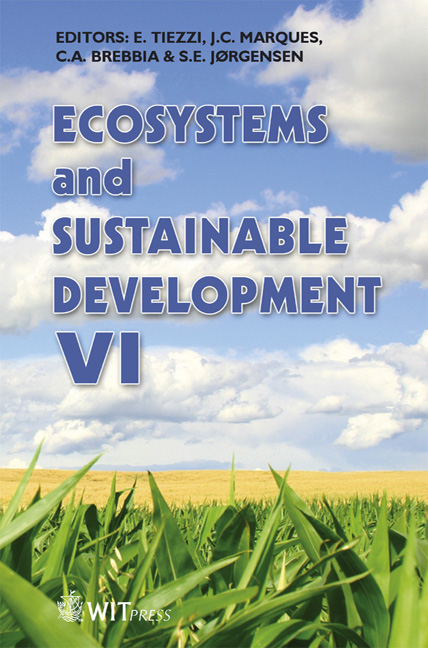An Eutrophication Model For A Lowland River-lake System
Price
Free (open access)
Transaction
Volume
106
Pages
10
Published
2007
Size
524 kb
Paper DOI
10.2495/ECO070021
Copyright
WIT Press
Author(s)
A. Gnauck & B. Luther
Abstract
Natural and man induced nutrient loads affect the functioning of freshwater ecosystems and restrict various water uses. In particular, internal pollution by nutrient remobilisation from sediment plays an important role in shallow water bodies. A sustainable management of such freshwater ecosystems can be achieved by using simulation models. To forecast the eutrophication process of a shallow river-lake system a modelling and simulation framework was developed including phosphorus remobilisation from sediment. Data are taken from the Lower Havel River. For water quality management decision control strategies based on the limiting nutrient concept and threshold values of LAWA are discussed. Keywords: eutrophication, water quality, modelling, phosphorus remobilisation, optimisation. 1 Introduction Eutrophication of freshwater bodies is characterised by an increase of dissolved nutrients in water bodies, mainly phosphorus, carbon and nitrogen, by excessive growth of plants, mainly algae, and by restricted water uses due to anoxic water conditions as well as by odour problems [1,2]. The eutrophication process of freshwater ecosystems is supported by intensive man-made activities in river basins. Man-made impacts caused a shift from oligotrophic to eutrophic and sometimes to hypertrophic freshwater ecosystems. Now it has become clear, that sediments have been accumulating phosphorus over several decades so that they now function as internal phosphorus sources [3]. Compared with the amount of phosphorus in the pelagic zone of eutrophic lakes, the phosphorus content of the sediment of shallow water bodies is considerable higher.
Keywords
eutrophication, water quality, modelling, phosphorus remobilisation, optimisation.





